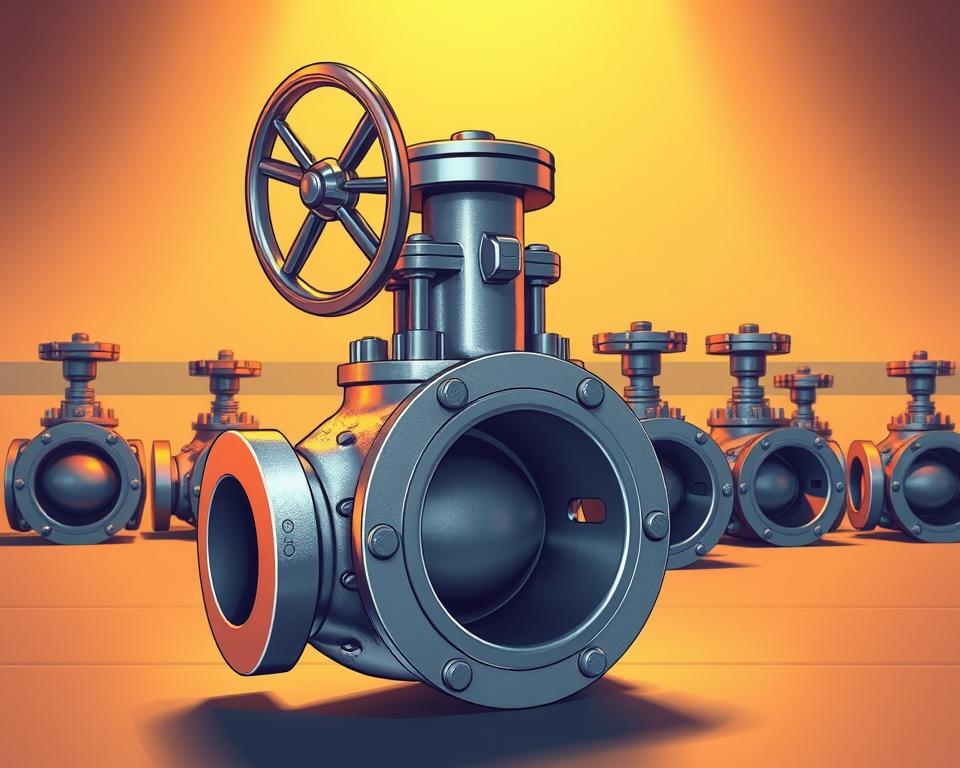Cast Iron Gate Valve Solutions: Practical Features, Benefits, and Uses
Could a single, well-made valve cut maintenance time and keep water systems running longer?
At Yaxing Valve, we supply Cast Iron Gate Valve Manufacturer and back their performance and service for U.S. clients. The range is designed for a long service life in public water and light industrial applications.
Each gate valve has a robust iron body, a machined wedge path, and straightforward handwheel operation. That means reliable shutoff, easy upkeep, and predictable performance in mechanical rooms, fire loops, and distribution networks.
I support specifiers with fast submittals and transparent details: sizes, end connections, pressure classes, and accessories. We retain cart and preference data (cookies) to make reorders simple.
If you need a practical replacement or a cost-effective option for new projects, compare these cast-iron gate valve advantages against your current hardware to spot life-cycle value and practical fit.
Why Yaxing Valve Cast Iron Gate Valves Deliver Reliable Flow Control
I personally validate each product at Yaxing Valve, so I can recommend our hardware with confidence for demanding U.S. jobsites.
Rugged cast-iron body engineered for industrial performance
Each unit uses a robust cast-iron body to resist deformation under load. Metal-to-metal seating and precise machining ensure tight shutoff when customers need it most.

Flow-optimized design with minimal pressure loss
The internal path is optimized to lower turbulence and pressure loss. As a result, pumps run more efficiently and energy use declines across the system.
- I confirm dimensions and tests against ANSI standards and internal QA.
- Stem, wedge, and bonnet interfaces are finished to reduce friction and keep handwheel torque consistent long-term.
- I balance body thickness for durability and installer-friendly weight.
- My product support documents tests and standards so procurement can finalize orders fast.
| Design Feature | Advantage | Specification |
|---|---|---|
| Cast iron body | High rigidity | Stable geometry targets met |
| Optimized gate geometry | Less headloss | Boosts pump operating efficiency |
| Stem & handwheel finish | Low-effort operation | Steady torque over service life |
| Test documentation | Quicker approvals | Reports aligned to ANSI |
Cast Iron Gate Valves—Materials, Design Details, and Key Performance
I outline the body, sealing, and stem choices to make selection and ordering straightforward.
Body, bonnet, and wedge materials
The material stack includes a cast-iron body/bonnet, a precision-machined wedge, and metal-to-metal seating for reliable shutoff in water service and general industry.
Stem and handwheel configurations
Non-rising stems and inside-screw stems are available for tight spaces. Each screw thread form and packing arrangement is documented in my product details.
Standards and performance limits
Qualified pressure/temperature ranges are published and end connections align with common ANSI standards to help engineers confirm fit without additional drawings.
- Handwheel and stem interface tuned for steady torque.
- Geometry and smooth internal surfaces minimize headloss through the gate.
- Series codes with submittal-ready specs shorten ordering cycles.
| Component | Material / Type | Rated Limit | Comments |
|---|---|---|---|
| Valve body/bonnet | Cast-iron | 150 psi | ANSI flange dimensions; welded or bolted |
| Gate wedge | Precision-machined metal | −20° to 180°F service | Metal seat with low-loss finish |
| Operating stem | Compact NRS/inside-screw | N/A | Thread/packing details in datasheet |
| Model series | YX-100 / YX-200 | 2–12 inch range | Simple part numbering |
Modern Applications, Install, and Operation
I advise contractors/owners on best-fit placements in today’s water and utility circuits. The goal is straightforward selection, installation, and checks so crews complete commissioning without callbacks.
Applications in waterworks, buildings, and general industry
Choose full-bore units when low restriction is critical—long mains, service feeds, and bypasses gain the most.
For mechanical rooms and industrial loops with limited headroom, I favor non-rising stem or inside-screw designs.
Install best practices
During handling, protect the body, lift at rated points, and avoid stressing flanges. Confirm end alignment before final bolt torquing to prevent leaks and distortion.
Pick gaskets compatible with your media, follow a cross-torque sequence, and set support spacing to avoid pipeline sag.
O&M notes
Place the handwheel for comfortable reach and confirm smooth movement after packing adjustments.
Schedule torque checks under pressure, inspect wedge and packing, and confirm operating range versus the media. Capture tag IDs in your account and link CMMS work orders.
| Topic | What to Do | Timing | Benefit |
|---|---|---|---|
| Use-case mapping | Use full-bore on mains; inside-screw/NRS in tight spots | Design stage | Lower headloss; space savings |
| Handling & installation | Use lift points, align ends, torque in sequence | Installation | Avoids stress-related leaks |
| Operational checks | Check smooth handwheel feel and pressure-test | Commissioning and routine | Consistent operation and shutoff |
| Maintenance records | Tag valves and link to account/CMMS | Throughout lifecycle | Quicker parts tracking/replacement |
Good handling and careful commissioning prolong service life and keep Resilient Seated Gate Valve in top shape.
Specify the Right Iron Gate Valve with Me at Yaxing Valve
Share line size, pressure expectations, and flow needs; I’ll match series/type to duty range and temperature.
My concise checklist speeds approvals: end type, inside-screw vs non-rising, and handwheel orientation. I also note stem handwheel and screw details for clear install guidance.
Check the image gallery for high-resolution views with layouts showing clearance and operator reach. Create an account so I can save specs, track valves by tag, and link drawings and a one-page PDF for the field.
Ask for a quick quote and I’ll confirm availability, lead times, alternates, and help you complete the order while you view the gallery. I use cookies only to keep your account session and cart ready.